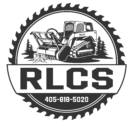Developing a property is an exciting venture, but it begins with a critical step: land clearing. Whether you’re preparing for residential, commercial, or agricultural development, clearing the land sets the foundation for your project’s success. However, this process is fraught with potential pitfalls, especially for first-time developers. From improper planning to regulatory oversights, land clearing mistakes can lead to costly delays, environmental damage, and even legal issues. Understanding the most common errors and how to avoid them can save you time, money, and a lot of headaches.
The Importance of Proper Land Clearing in Property Development
Land clearing is more than just removing trees and brush; it’s about preparing the land to meet your development needs while adhering to safety and environmental standards. Proper land clearing ensures that the site is safe, accessible, and suitable for construction or agricultural use. However, cutting corners or neglecting crucial steps can result in significant problems down the road. Here’s a look at the key land clearing mistakes to avoid during property development preparation.
Common Land Clearing Mistakes and How to Avoid Them
Navigating the land clearing process can be daunting, especially for those new to property development. Here are the top mistakes you should avoid to ensure a smooth and successful project.
Failing to Create a Detailed Land Clearing Plan
One of the most critical mistakes in land clearing is failing to develop a comprehensive plan. Without a detailed blueprint, you risk overlooking key aspects of the clearing process, which can lead to unexpected costs and delays. A proper land clearing plan should outline the scope of work, identify potential obstacles, and include a timeline and budget.
Before you start, assess your land thoroughly. Take note of vegetation types, terrain, and any existing structures or utilities. Consult with professionals such as surveyors, environmental consultants, and land clearing experts to ensure your plan is realistic and comprehensive. A well-thought-out plan serves as a roadmap, guiding the clearing process and minimizing the risk of costly errors.
Not Checking for Permits and Local Regulations
Overlooking the need for permits is a frequent and costly mistake in land clearing. Many jurisdictions in Oklahoma and beyond require permits for activities such as tree removal, burning, and grading. Failure to secure the necessary permits can result in fines, work stoppages, or legal action, all of which can derail your project.
To avoid this, research local regulations thoroughly before starting any clearing work. Contact your county or city planning department to determine which permits you need. Additionally, be aware of environmental regulations, such as those protecting wetlands or endangered species habitats. Compliance with these laws not only avoids legal issues but also demonstrates responsible land stewardship.
Underestimating the Importance of Site Evaluation
Proper site evaluation is essential to understand the land’s unique characteristics and potential challenges. However, many developers skip this crucial step, leading to unexpected complications during the clearing process. Evaluating the site involves assessing soil conditions, identifying hazardous trees, and determining the presence of rocks or buried debris that could affect construction.
Conduct a professional site evaluation before clearing begins. This might include soil testing, topographical surveys, and environmental assessments. Understanding your land’s specific needs allows you to tailor your clearing strategy accordingly, preventing surprises and ensuring the land is prepared correctly for development.
Neglecting to Mark Boundaries and Utilities
Neglecting to mark property boundaries and locate underground utilities is another common mistake that can have severe consequences. Clearing land without clear boundary markers can result in encroaching on neighboring properties, leading to disputes and legal issues. Similarly, failing to identify underground utilities, such as gas lines, water pipes, or electrical cables, can result in dangerous and costly damage.
Before any clearing work begins, mark your property boundaries clearly and consult with local utility companies to locate underground lines. Use flags, stakes, or paint to highlight critical areas that should be avoided during clearing. This simple step can prevent accidents and ensure that you stay within your property’s legal limits.
Using the Wrong Equipment or Techniques
Using inappropriate equipment or techniques for your specific land clearing needs is a mistake that can lead to inefficiencies, increased costs, and even damage to your property. For instance, using heavy machinery on wet or uneven terrain can cause soil compaction or erosion, while failing to use proper tree removal methods can leave behind dangerous stumps and roots.
To avoid this, consult with a professional land clearing company that has experience with the type of work your land requires. They can recommend the right machinery, such as bulldozers, excavators, or mulchers, and the best techniques, whether it’s manual clearing, mechanical removal, or controlled burning. Choosing the right approach not only makes the process more efficient but also minimizes the risk of property damage.
Ignoring Environmental Considerations
Land clearing can have significant environmental impacts, from soil erosion to loss of wildlife habitats. Ignoring these considerations is not only irresponsible but can also result in violations of environmental laws and regulations. Common environmental mistakes include removing too much vegetation, failing to control runoff, and neglecting to protect nearby water bodies.
To mitigate environmental impacts, implement best practices such as retaining some vegetation to control erosion, installing silt fences to manage runoff, and creating buffer zones around water bodies. Additionally, consider consulting with an environmental expert to ensure your clearing process aligns with sustainable practices and regulatory requirements.
Improper Debris Disposal
Clearing land generates a significant amount of debris, including trees, brush, rocks, and stumps. Improper disposal of this material is a frequent mistake that can lead to environmental fines and additional costs. Common errors include illegal dumping, burning without permits, or leaving debris piles that can become hazards.
Plan for debris disposal as part of your overall land clearing strategy. Options include hauling debris to a landfill, chipping wood into mulch, or burning under controlled conditions (with the proper permits). Recycling or repurposing cleared materials can also reduce disposal costs and contribute to a more sustainable clearing process.
Overlooking Erosion Control Measures
One of the most overlooked aspects of land clearing is erosion control. Removing vegetation destabilizes the soil, making it susceptible to erosion from wind and rain. Failing to implement erosion control measures can result in sediment runoff, property damage, and water pollution.
To prevent erosion, consider implementing measures such as silt fences, hay bales, or planting ground cover to stabilize the soil. Grading the land to control water flow and creating retention ponds or ditches can also help manage stormwater runoff. Proper erosion control not only protects your property but also ensures compliance with environmental regulations.
Cutting Costs on Professional Services
In an attempt to save money, some property developers opt to cut costs on professional services, choosing to do the work themselves or hire unqualified contractors. This often leads to subpar results, costly mistakes, and increased risks. Land clearing is a complex task that requires expertise, specialized equipment, and adherence to safety standards.
Investing in professional land clearing services ensures that the job is done correctly and safely. Professionals bring experience, the right equipment, and knowledge of local regulations, all of which contribute to a successful clearing process. While it might seem like an added expense upfront, hiring the right experts can save you money in the long run by avoiding mistakes that could derail your project.
Ignoring Future Site Needs During Clearing
Land clearing should not only focus on immediate needs but also consider future site requirements. For instance, failing to remove stumps or large rocks might save time initially, but these obstacles can hinder later construction efforts and increase costs. Similarly, neglecting to grade the land properly can lead to drainage issues that affect your property’s usability.
Plan your land clearing with future development in mind. Remove all obstacles that could interfere with construction, ensure proper grading for drainage, and leave room for future infrastructure like driveways or utilities. This foresight will help streamline the development process and prevent costly corrections later on.
FAQs
What is the most common mistake in land clearing?
The most common mistake in land clearing is failing to create a detailed plan that considers all aspects of the project, including permits, site evaluation, and debris disposal.
Do I need a permit to clear land for development?
Yes, permits are often required for land clearing, especially if it involves tree removal, burning, or altering the landscape. Always check with local authorities for specific requirements in your area.
How can I avoid damaging underground utilities during land clearing?
Before starting any clearing work, contact local utility companies to mark the location of underground lines. Clearly marking these areas will help avoid accidental damage during the clearing process.
What should I do with debris after clearing land?
Debris can be disposed of through hauling, burning (with the proper permits), or recycling. Always follow local regulations for debris disposal to avoid fines and environmental damage.
Why is erosion control important in land clearing?
Erosion control prevents soil from washing away, which can cause property damage and environmental pollution. Implementing measures like silt fences and ground cover helps protect the land and complies with regulations.
Can I clear land myself, or should I hire professionals?
While DIY clearing is possible, hiring professionals is recommended due to the complexities involved, including safety concerns, equipment needs, and regulatory compliance.
Conclusion
Avoiding common land clearing mistakes is essential for a successful property development project. By planning thoroughly, adhering to regulations, and enlisting the help of experienced professionals, you can navigate the land clearing process with confidence. Whether you’re a first-time developer or a seasoned pro, understanding these pitfalls and how to avoid them will set you on the path to a smooth and efficient site preparation, ensuring your project starts on solid ground.


